
Proceedings of the Institution of Mechanical Engineers Part O-Journal of Risk and Reliability
Scope & Guideline
Fostering a Culture of Safety through Scholarly Discourse.
Introduction
Aims and Scopes
- Reliability Engineering and Maintenance:
The journal emphasizes methodologies for assessing and enhancing the reliability of mechanical and structural systems, including predictive maintenance strategies and condition-based maintenance. - Risk Assessment and Management:
Papers published in the journal frequently tackle risk identification, quantification, and mitigation strategies across various industries, including energy, transportation, and manufacturing. - Data-Driven Approaches:
A significant focus is placed on employing advanced data analytics, including machine learning and deep learning techniques, for predictive modeling of system failures and performance degradation. - Complex System Analysis:
The journal also explores the reliability of complex systems with multiple interacting components, utilizing probabilistic models, Bayesian networks, and system-level analyses. - Safety and Resilience Engineering:
Research addressing safety assessments, resilience strategies, and risk-informed decision-making in engineering systems is a consistent theme, particularly in critical infrastructure.
Trending and Emerging
- Machine Learning and AI in Reliability Engineering:
The integration of machine learning and artificial intelligence techniques for predictive maintenance and fault diagnosis is a rapidly growing theme, enabling more accurate and efficient reliability assessments. - Resilience Engineering:
Research focusing on resilience strategies for complex systems, particularly in response to disruptions and failures, is trending, highlighting the importance of adaptive and robust engineering solutions. - Cyber-Physical Systems and Digital Twins:
The exploration of digital twins and cyber-physical systems for real-time monitoring and predictive analytics in risk management is becoming increasingly prominent. - Sustainability and Environmental Risk Assessment:
Emerging themes around sustainability and environmental considerations in risk assessment and reliability engineering are gaining traction, reflecting broader societal concerns. - Integrated Risk and Reliability Frameworks:
There is a growing trend towards developing integrated frameworks that combine reliability engineering with risk assessment, addressing the interdependencies of systems in complex environments.
Declining or Waning
- Traditional Statistical Methods:
There is a noticeable reduction in the application of classical statistical methods for reliability analysis, as newer data-driven and machine learning approaches gain traction. - Generalized Reliability Models:
The use of generalized models for reliability assessment, especially those that do not incorporate modern computational techniques, seems to be less prevalent in recent publications. - Conventional Risk Assessment Frameworks:
The journal has seen fewer papers focused on traditional risk assessment frameworks that do not leverage advanced data analytics or machine learning methodologies. - Single-Factor Analysis:
Research solely focused on single-factor analysis for reliability and risk assessment is declining, as there is a growing emphasis on multi-faceted and integrated approaches.
Similar Journals
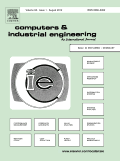
Computers & Industrial Engineering
Bridging the Gap Between Theory and Practice in EngineeringComputers & Industrial Engineering, published by PERGAMON-ELSEVIER SCIENCE LTD, is a premier journal dedicated to advancing the fields of computer science and industrial engineering. Since its inception in 1976, this journal has become a vital resource for researchers and professionals, with a remarkable impact factor and distinguished Q1 quartile rankings in both the Computer Science and Engineering categories, reflecting its significant influence and respect within the academic community. Featuring a comprehensive scope that encompasses innovative computational methods, system optimization, and industrial applications, it serves as a platform for high-quality research that explores the interplay between technology and industrial processes. Although it does not currently offer open access, the journal's robust indexing in Scopus—ranked #12 in General Engineering and #15 in General Computer Science—underscores its commitment to disseminating cutting-edge knowledge and fostering collaboration among scholars, practitioners, and students globally. With its convergence spanning until 2024, Computers & Industrial Engineering is positioned at the forefront of emerging trends, making it an essential reference point for anyone dedicated to the evolution of technology in industry.
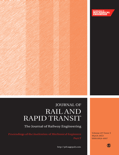
PROCEEDINGS OF THE INSTITUTION OF MECHANICAL ENGINEERS PART F-JOURNAL OF RAIL AND RAPID TRANSIT
Elevating Rail Engineering: Insights for a Sustainable FuturePROCEEDINGS OF THE INSTITUTION OF MECHANICAL ENGINEERS PART F - JOURNAL OF RAIL AND RAPID TRANSIT is a premier academic journal published by SAGE Publications Ltd, focusing on the latest advancements in rail transportation and rapid transit systems. With an ISSN of 0954-4097 and E-ISSN of 2041-3017, this journal has garnered significant attention in the field, achieving a Q2 category ranking in Mechanical Engineering and securing a Scopus rank of #192 out of 672, placing it in the 71st percentile. Covering converged years from 1989 to 2024, it provides a platform for innovative research and discussions that address the complexities and evolving technologies within the rail industry. Its publication draws contributions from esteemed researchers, professionals, and students alike, fostering a crucial dialogue on sustainability, efficiency, and advancements in transit infrastructure. While the journal is not open access, it remains a vital resource for those committed to pushing the boundaries of mechanical engineering and rail systems development.

Journal of Aerospace Information Systems
Transforming Ideas into Aerospace SolutionsJournal of Aerospace Information Systems, published by the American Institute of Aeronautics and Astronautics, is a premier scholarly platform dedicated to advancing the interdisciplinary field of aerospace information systems. With a focus on innovative research and practical applications, this journal supports the dynamic integration of aerospace engineering, computer science, and electrical engineering. Positioned in Q2 quartiles for 2023 in its respective categories, it ranks notably in Aerospace Engineering (#52/153) and Electrical and Electronic Engineering (#357/797), indicating its significant influence within the scientific community. Research published within its pages addresses a diverse range of technological advancements and applications that are vital for the development of contemporary aerospace systems. As an open-access journal, it facilitates broader dissemination of knowledge, allowing researchers, professionals, and students to engage with cutting-edge discoveries and methodologies. With its competitive impact and commitment to fostering innovation, the Journal of Aerospace Information Systems is an essential resource for anyone involved in the burgeoning field of aerospace technology.
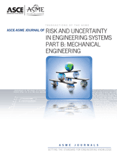
ASCE-ASME Journal of Risk and Uncertainty in Engineering Systems Part B-Mechanical Engineering
Enhancing Reliability Through Comprehensive ResearchASCE-ASME Journal of Risk and Uncertainty in Engineering Systems Part B-Mechanical Engineering, published by the reputable ASME, is a leading platform dedicated to advancing knowledge in the field of mechanical engineering with a particular emphasis on risk assessment and uncertainty analysis. With an ISSN of 2332-9017 and an E-ISSN of 2332-9025, this journal has established itself as a significant contributor to ongoing research in safety, risk, and reliability, consistently ranking in the Q2 quartile for Mechanical Engineering as well as Safety Research categories. As evidenced by its impressive Scopus rankings—including a notable 80th percentile in Safety Research—this journal fosters high-quality research that informs engineering practices and enhances safety protocols. Operating under a traditional access model, it aims to provide researchers, professionals, and students with essential insights and methodologies to address contemporary challenges in engineering systems. Each contribution reflects an aim to bridge theory and application, thus making the journal an invaluable resource for stakeholders striving for excellence in mechanical engineering and safety management.
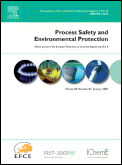
PROCESS SAFETY AND ENVIRONMENTAL PROTECTION
Elevating standards in process safety and environmental science.PROCESS SAFETY AND ENVIRONMENTAL PROTECTION, published by Elsevier, is a premier academic journal dedicated to advancing the fields of chemical engineering, environmental science, and safety management. With an impressive impact factor, this esteemed journal undergoes a meticulous peer-review process and serves as a vital platform for researchers, professionals, and students seeking to disseminate cutting-edge research and innovative practices. Submissions are welcome in a wide scope of topics related to safety, risk, reliability, and environmental engineering, demonstrating its influence as a Q1 journal across multiple categories, including Environmental Chemistry and Safety, Risk, Reliability and Quality. By providing a rigorous analysis of current challenges and solutions in the domain since its inception in 1990, it continues to foster interdisciplinary collaboration and practical applications in the United Kingdom and beyond. With the journal not currently offering Open Access options, subscribers gain exclusive access to pivotal insights that shape industry standards and drive advancements in sustainable practices.
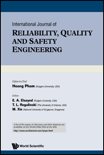
International Journal of Reliability Quality and Safety Engineering
Championing Reliability and Safety in Engineering DisciplinesThe International Journal of Reliability Quality and Safety Engineering, published by World Scientific Publishing Co Pte Ltd, is a leading platform for disseminating cutting-edge research in the fields of reliability, quality, and safety engineering. With an impressive scope that spans across aerospace, electrical engineering, nuclear energy, and industrial manufacturing, this journal serves as a critical resource for researchers and professionals aiming to enhance system dependability and operational excellence. Indexed in Scopus, it holds a respectable Q3 ranking across various categories in 2023, reflecting its growing influence in the academic community. Although currently not open access, it provides ample opportunities for scholars to publish impactful studies from its extensive database, which has evolved since 1996. The journal's commitment to advancing knowledge in reliability and safety engineering makes it a pivotal resource for those dedicated to improving engineering practices and protocols worldwide.

Quality Engineering
Pioneering innovative solutions in industrial quality management.Quality Engineering, published by Taylor & Francis Inc, is a leading journal in the field of Industrial and Manufacturing Engineering and Safety, Risk, Reliability, and Quality. With a focus on the advancement of quality assurance and management practices, this journal has been a valuable resource since its inception, featuring research that spans from 1970 to the present day. The journal holds a commendable placement in the 2023 category quartiles, ranked Q2 in both relevant fields, highlighting its significance in contributing to innovative methodologies and solutions in quality engineering. Although currently not an open access publication, it continues to attract a wide array of contributions from researchers, professionals, and students dedicated to enhancing quality in engineering processes. With a Scopus rank reflecting its solid standing—75th percentile in Safety, Risk, Reliability and Quality and 62nd percentile in Industrial and Manufacturing Engineering—Quality Engineering remains an essential platform for disseminating knowledge that fosters excellence in the engineering domain.

Proceedings of the Institution of Civil Engineers-Forensic Engineering
Empowering Engineers with Forensic KnowledgeProceedings of the Institution of Civil Engineers - Forensic Engineering is a pivotal journal in the field of forensic engineering, published by Emerald Group Publishing Ltd, a renowned name in academic publishing. With a focus on investigating and understanding the failures of civil engineering structures, this journal provides a critical platform for the dissemination of research and case studies aimed at enhancing safety, risk, and reliability in engineering practices. It holds an important place in the Q4 quartile of the Safety, Risk, Reliability and Quality category as of 2023, and currently ranks #123 out of 207 in its field according to Scopus, reflecting its emerging influence despite its relatively recent establishment in 2011. Researchers, practitioners, and students alike will find valuable insights through non-open access articles that contribute to a deeper understanding of forensic analysis in civil engineering contexts. The journal's mission is to promote discussions that lead to significant advancements in civil engineering safety and reliability, ultimately informing best practices and policy-making in the profession.

International Journal of Prognostics and Health Management
Advancing the Future of Prognostics and Health ManagementThe International Journal of Prognostics and Health Management (IJPHM), published by the PHM Society, is a leading academic journal dedicated to the interdisciplinary fields of engineering, safety, and risk management. With an ISSN of 2153-2648, this open-access journal has been disseminating pioneering research since its inception in 2010, enabling accessibility to vital advancements in prognostics and health management practices. The journal is recognized for its rigorous peer-reviewed articles, currently holding a prestigious Q2 ranking in multiple categories including Mechanical Engineering and Safety, Risk, Reliability and Quality, along with a Q3 ranking in Civil and Structural Engineering, Energy Engineering and Power Technology, and Computer Science. The journal's commitment to advancing knowledge is underscored by its robust Scopus rankings across various engineering disciplines, making it an essential resource for researchers, professionals, and students alike. With its broad scope and comprehensive coverage, IJPHM serves as a vital platform for disseminating research findings that inform best practices and innovative solutions in health management and engineering.

ELECTRIC POWER COMPONENTS AND SYSTEMS
Exploring the Frontiers of Energy TechnologyELECTRIC POWER COMPONENTS AND SYSTEMS is a respected peer-reviewed journal dedicated to advancing the field of electrical and electronic engineering, energy engineering, and power technology. Published by Taylor & Francis Inc, this journal boasts a dynamic scope that encompasses a wide array of topics relevant to power systems, including renewable energy, power distribution, and component reliability. With an impact factor indicative of its ongoing contribution to research, it ranks in the Q3 category across multiple engineering disciplines according to the latest metrics. Researchers and professionals will find this journal an invaluable resource, offering insights into the latest developments and innovations in electric power systems from its inception in 2000 to the current era and beyond. Accessible online with Open Access options, it caters to both established experts and emerging scholars looking to deepen their knowledge and foster collaboration within this critical field.